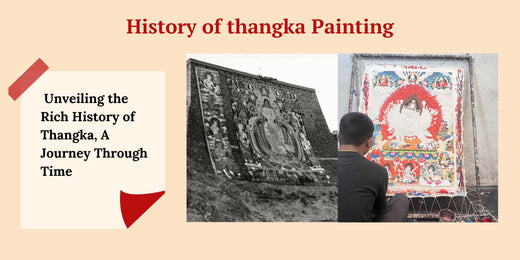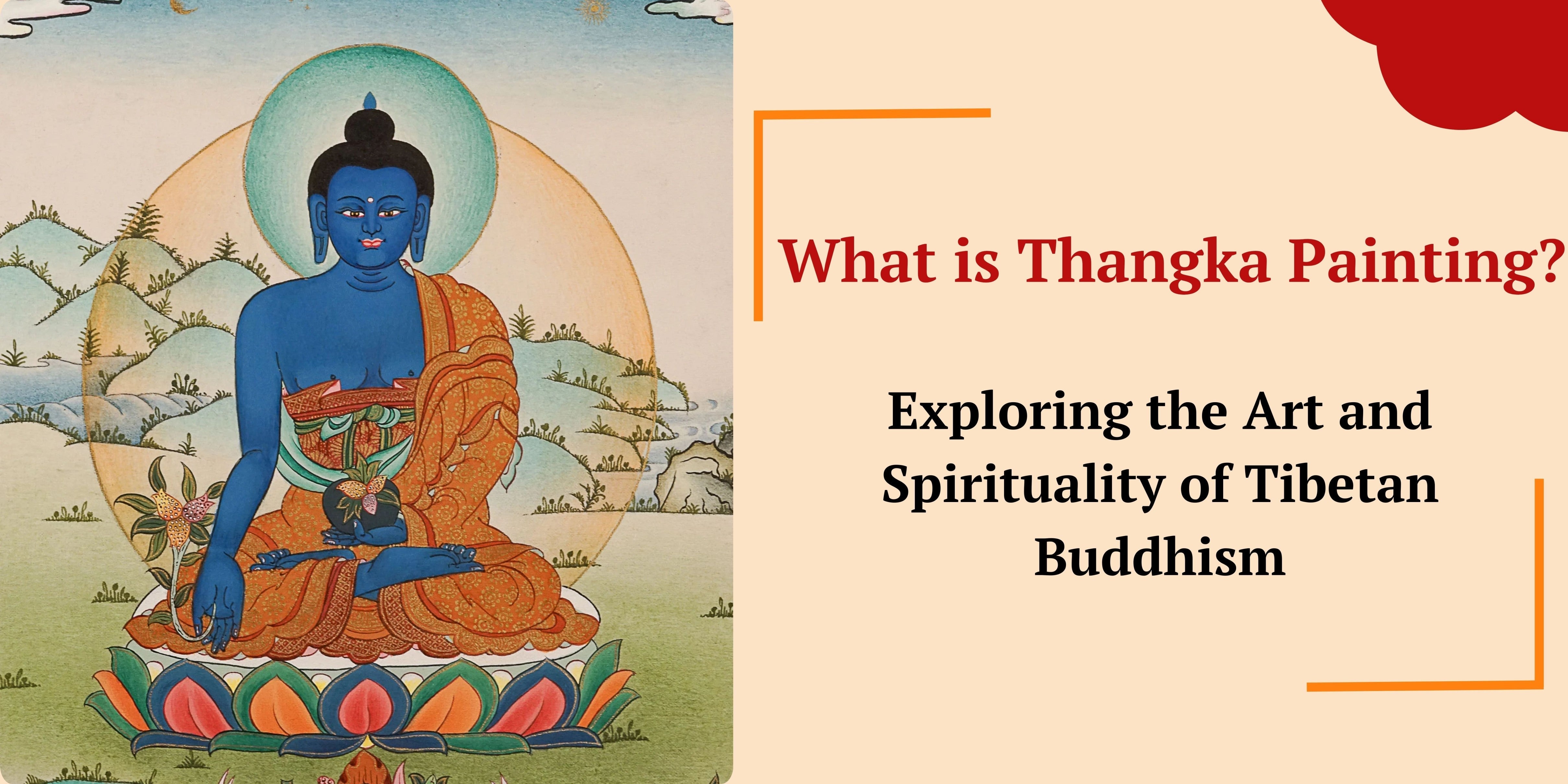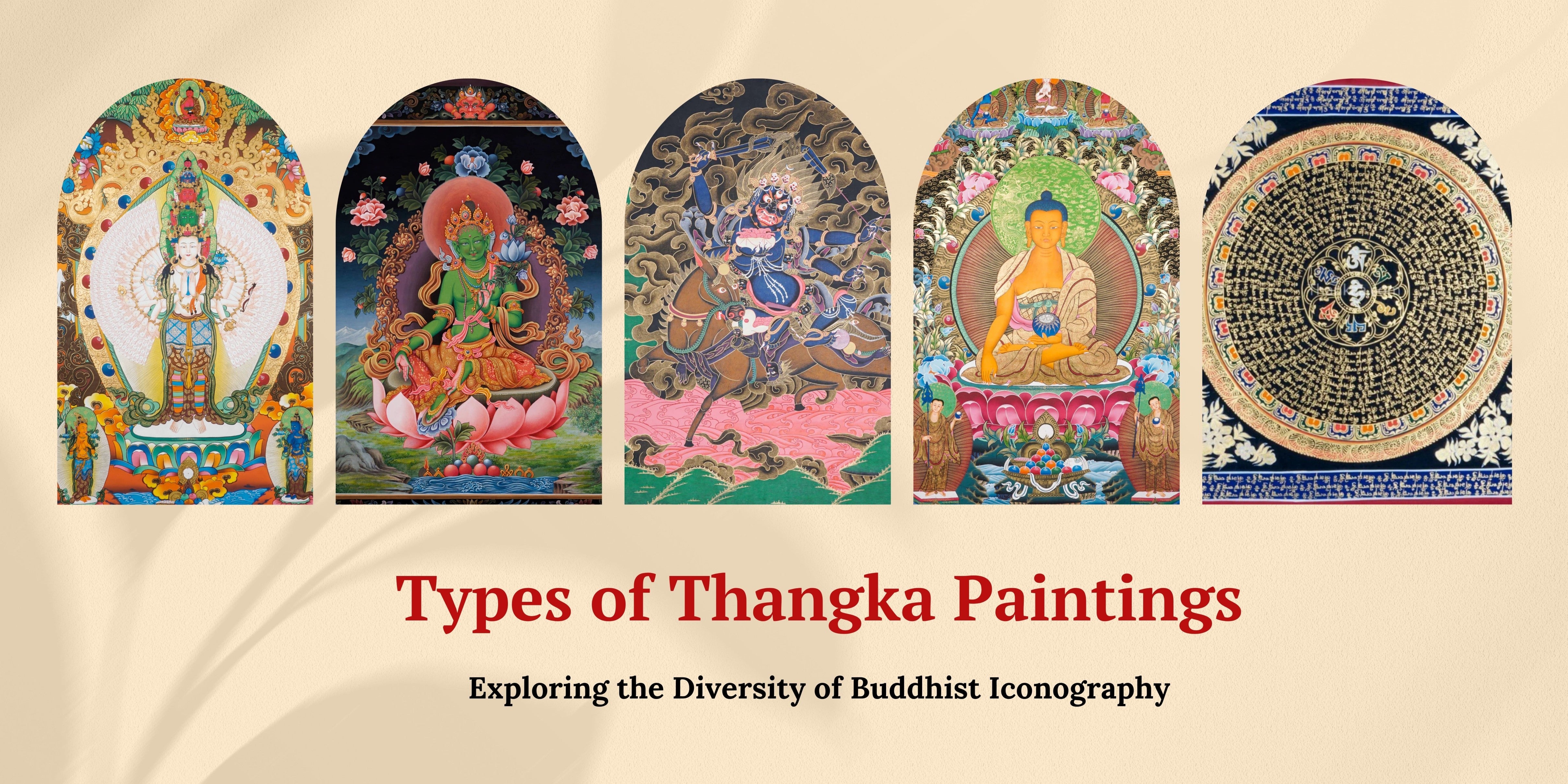
History of thangka
History of thangka
Introduction:
Thangka paintings, with their intricate designs and vibrant colors, stand as a testament to the rich cultural heritage of Tibet and the Himalayan regions. These captivating artworks have a history as colorful as the images they depict, weaving together spirituality, artistry, and tradition into a single masterpiece.
Join us as we start on a journey through the fascinating history of Thangka paintings, uncovering the secrets and stories behind these treasured pieces of art.
Origins of Thangka:
Thangka, which means "recorded message" or "written record" in Tibetan, traces its origins back to ancient Buddhist traditions. It is believed that Thangkas first emerged in Nepal around the 7th century AD, during the spread of Buddhism across the Himalayan region. Initially used as portable devotional objects, Thangkas served as visual aids for meditation and religious instruction.
The Tibetan king Songtsän Gampo and Princess Bhrikuti of Nepal, daughter of King Lichchavi, were married, bringing with them the Nepalese art known as "written record," or thangka, to Tibet. The Thangka paintings feature the Gods and Goddesses of Buddhism and Hinduism, the Wheel of Life, Mandalas, Bhairab, exotic imagery, and a meditating Buddha with his life cycle. Painting with thangkas requires mastery of a number of difficult skills. Since the 13th century, a piece of art known as the Newari Thangkas, or Paubha, has been concealed in the Kathmandu Valley.

Evolution of Thangka Art:
Throughout its evolution, Thangka painting has undergone remarkable transformations, each era adding layers of complexity and refinement to this revered art form. From its early days as basic illustrations to the masterpieces we see today, Thangkas have been shaped by the hands of skilled artisans who painstakingly crafted each piece with unwavering dedication. Utilizing natural pigments sourced from the earth and embellishing their creations with intricate details using precious materials like gold, these artists elevated Thangka painting to new heights of aesthetic brilliance. As the centuries passed, the themes depicted in Thangkas expanded beyond religious iconography, encompassing a vast array of subjects including historical narratives, mythological tales, and even portraits of revered figures. This evolution reflects not only the artistic prowess of the creators but also the dynamic cultural landscape in which Thangka painting flourished.

Role in Tibetan Buddhism:
In the realm of Tibetan Buddhism, Thangka paintings hold a position of profound significance, serving as tangible conduits for spiritual contemplation and enlightenment. Within the sacred spaces of monasteries, temples, and homes, Thangkas are revered as sacred objects, their presence invoking a sense of reverence and awe. Each Thangka is imbued with layers of symbolism, meticulously woven into its intricate design to convey profound spiritual teachings and insights into the realms of the divine. Through meditation and contemplation upon these images, practitioners seek to deepen their understanding of Buddhist philosophy and attain higher states of consciousness. Thus, Thangkas adorn the physical spaces of Tibetan Buddhist practice and serve as portals to the transcendent realms of the spiritual journey.
Spiritual Significance:
Thangka paintings hold profound spiritual significance in Tibetan Buddhism. They are more than mere artworks; they serve as visual tools for meditation, devotion, and contemplation, helping practitioners deepen their understanding of Buddhist philosophy and attain higher states of consciousness. Each Thangka is meticulously crafted with layers of symbolism, reflecting the divine teachings, deities, mandalas, and sacred concepts of Buddhism. Through meditation upon these images, practitioners seek to connect with the spiritual realms and gain wisdom.

Materials and Techniques:
The creation of a Thangka requires exceptional skill, patience, and dedication. Artists use natural pigments, sourced from minerals and precious stones, mixed with water or glue to create vibrant, lasting colors. The canvas, typically made of cotton or silk, is carefully prepared, sometimes treated with a mixture of glue and chalk to achieve a smooth surface. Delicate brushes made from animal hair are employed to apply the pigments, allowing for intricate details. Gold leaf is often used to add a luminous quality, symbolizing transcendence beyond worldly concerns. The entire process is labor-intensive, blending technical precision with spiritual devotion to bring each Thangka to life.
Preservation and Revival:
The tradition of Thangka painting has persevered thanks to the unwavering dedication of artists, scholars, and enthusiasts committed to its preservation and revival. Recognizing the intrinsic value of this ancient art form, individuals and organizations worldwide have undertaken efforts to safeguard its legacy for future generations. Through initiatives such as workshops, educational programs, and collaborative projects, they have sought to pass down the intricate techniques and profound spiritual significance of Thangka painting to new generations of artists and aficionados. In doing so, they ensure that the flame of this timeless tradition continues to burn brightly, illuminating the path for those who seek to delve into its depths.

Appreciation and Global Influence:
In recent years, Thangka painting has transcended its traditional boundaries, captivating audiences around the globe with its exquisite beauty and spiritual depth. Through exhibitions, cultural exchanges, and academic studies, the global community has come to appreciate the cultural significance and artistic merit of Thangkas. Art lovers and collectors alike are drawn to the intricate details and vibrant colors of these works, recognizing them as masterpieces of human creativity and spiritual insight. As Thangka painting continues to garner recognition on the world stage, it serves as a testament to the enduring power of art to transcend cultural barriers and touch the hearts and minds of people from diverse backgrounds.
Conclusion:
The history of Thangka painting is a tribute to the enduring legacy of human creativity and spiritual exploration. From its humble origins to its status as a revered art form, Thangkas have journeyed through the annals of time, leaving an indelible mark on the cultural landscape of Tibet and beyond. As we marvel at the intricate brushstrokes and timeless wisdom encapsulated within these sacred artworks, let us honor the artisans who have dedicated their lives to preserving this ancient tradition. May the legacy of Thangka painting continue to inspire and enlighten generations to come, serving as a beacon of beauty and truth in an ever-changing world.


